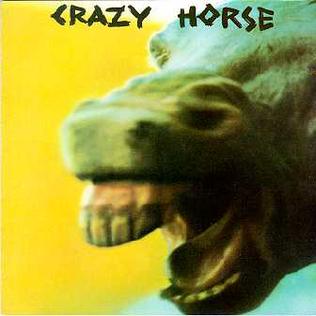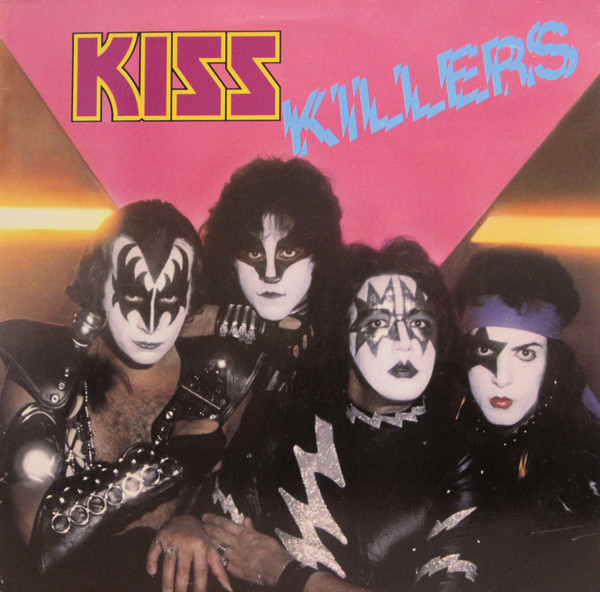 Back when Neil Young hooked up with a group called the Rockets, he planned to not only use them as a backing band but also shepherd their career as a separate entity. As with most things in Neil’s career, intent didn’t always become results, and after the band was whittled down to guitarist Danny Whitten, bassist Billy Talbot, and drummer Ralph Molina—and freshly monikered Crazy Horse—he augmented them on the road with session legend and mentor Jack Nitzsche. By the time they finally recorded their own album, young phenom Nils Lofgren was in the mix.
Back when Neil Young hooked up with a group called the Rockets, he planned to not only use them as a backing band but also shepherd their career as a separate entity. As with most things in Neil’s career, intent didn’t always become results, and after the band was whittled down to guitarist Danny Whitten, bassist Billy Talbot, and drummer Ralph Molina—and freshly monikered Crazy Horse—he augmented them on the road with session legend and mentor Jack Nitzsche. By the time they finally recorded their own album, young phenom Nils Lofgren was in the mix.Danny is the main singer on Crazy Horse, beginning with “Gone Dead Train”, written by Jack and first heard sung by Randy Newman on the soundtrack of the Mick Jagger vehicle Performance at his most rockin’ ever. Neil’s “Dance, Dance, Dance” had figured in his own acoustic sets for a while; here it’s harmonized and augmented by Byrds-adjacent fiddler Gib Guilbeau. “Look At All The Things” is Danny’s first great song here, so simple yet mesmerizing. A constantly phased guitar colors “Beggars Day”, which Nils wrote and gets credited as lead singer on, but to these ears it sounds like Danny. But the song everyone remembers is the heartbreaking “I Don’t Want To Talk About It”, which got its widest exposure via Rod Stewart’s two cover versions.
“Downtown” has another Neil connection, as he’d pointedly release a live version one of his own albums. Jack’s piano drives his own “Carolay”, with cool California harmonies and surprising meter changes, but “Dirty, Dirty” isn’t much more than a three-chord stomp with lots of slide and little in the way of lyrics. We can hear more of Nils on “Nobody”, another strong early effort by the kid. “I’ll Get By” does indeed get by on the strength of some really obvious rhymes, and Jack proves why he was never a singer on “Crow Jane Lady”, which takes advantage of a long, long fade.
 The sum is definitely greater than the parts on Crazy Horse, and the album holds together very well. We notice that Billy’s bass is more animated here than anywhere else captured on tape. But by this time Danny had become less than reliable, to put it mildly, and Nils was soon busy with his solo career. Nitzsche only had so much patience for most things anyway, and stuck with Neil. Undeterred, Billy and Ralph brought in erstwhile Rocket George Whitsell and two other guys to record a follow-up. Loose split the songwriting between the new guys, and given the generic country rock on display here, Whitsell was the key, with such strong tracks as “Try”, “Move”, and “All Alone Now”, but the wonderfully titled “And She Won’t Even Blow Smoke In My Direction” is sadly instrumental. (Greg Leroy’s “All The Little Things” is fairly decent too, and his slide guitar throughout does its best to fill the hole Nils left.)
The sum is definitely greater than the parts on Crazy Horse, and the album holds together very well. We notice that Billy’s bass is more animated here than anywhere else captured on tape. But by this time Danny had become less than reliable, to put it mildly, and Nils was soon busy with his solo career. Nitzsche only had so much patience for most things anyway, and stuck with Neil. Undeterred, Billy and Ralph brought in erstwhile Rocket George Whitsell and two other guys to record a follow-up. Loose split the songwriting between the new guys, and given the generic country rock on display here, Whitsell was the key, with such strong tracks as “Try”, “Move”, and “All Alone Now”, but the wonderfully titled “And She Won’t Even Blow Smoke In My Direction” is sadly instrumental. (Greg Leroy’s “All The Little Things” is fairly decent too, and his slide guitar throughout does its best to fill the hole Nils left.)
 But nobody cared, and this wasn’t enough to sustain them or keep them on Reprise, so at the end of 1972, Billy, Ralph, and Leroy started over again with two new members on keyboards and other guitar. At Crooked Lake sported a clever cut-out cover design, but that was about it. This music is even more generic than Loose—some tracks don’t even have the rhythm section at all—and can be avoided, unless you really liked Firefall. Both albums tanked, but luckily Ralph and Billy started working with Neil again, and eventually found guitarist Frank Sampedro, who was good enough to revive the Crazy Horse moniker, which is another tangent.
But nobody cared, and this wasn’t enough to sustain them or keep them on Reprise, so at the end of 1972, Billy, Ralph, and Leroy started over again with two new members on keyboards and other guitar. At Crooked Lake sported a clever cut-out cover design, but that was about it. This music is even more generic than Loose—some tracks don’t even have the rhythm section at all—and can be avoided, unless you really liked Firefall. Both albums tanked, but luckily Ralph and Billy started working with Neil again, and eventually found guitarist Frank Sampedro, who was good enough to revive the Crazy Horse moniker, which is another tangent.
 Neil has always spoken reverently of Danny Whitten, so Crazy Horse on their own haven’t exactly been forgotten as the decades passed. The band’s legacy got another boost in 2005 when Rhino Handmade compiled Scratchy, subtitled The Complete Reprise Recordings. This conveniently put the first album and Loose on one disc, with a handful of entertaining outtakes—mostly from the first album, plus a lame unreleased remake of “When You Dance You [sic] Can Really Love”—along with a “radio spot” and both sides of a 1962 single by Danny & The Memories (a.k.a. The Rockets when they were a doo-wop group) on a second disc. Historically it was nice of them to include both albums, but instead has us wishing they’d just stuck with a simple expanded version of the first album, with disc two’s extras added after the album proper. That’s how you can hear the first album on the Neil Young Archives site, after all.
Neil has always spoken reverently of Danny Whitten, so Crazy Horse on their own haven’t exactly been forgotten as the decades passed. The band’s legacy got another boost in 2005 when Rhino Handmade compiled Scratchy, subtitled The Complete Reprise Recordings. This conveniently put the first album and Loose on one disc, with a handful of entertaining outtakes—mostly from the first album, plus a lame unreleased remake of “When You Dance You [sic] Can Really Love”—along with a “radio spot” and both sides of a 1962 single by Danny & The Memories (a.k.a. The Rockets when they were a doo-wop group) on a second disc. Historically it was nice of them to include both albums, but instead has us wishing they’d just stuck with a simple expanded version of the first album, with disc two’s extras added after the album proper. That’s how you can hear the first album on the Neil Young Archives site, after all.
Crazy Horse Crazy Horse (1971)—3½
Crazy Horse Loose (1972)—2½
Crazy Horse At Crooked Lake (1972)—2
Crazy Horse Scratchy: The Complete Reprise Recordings (2005)—3





